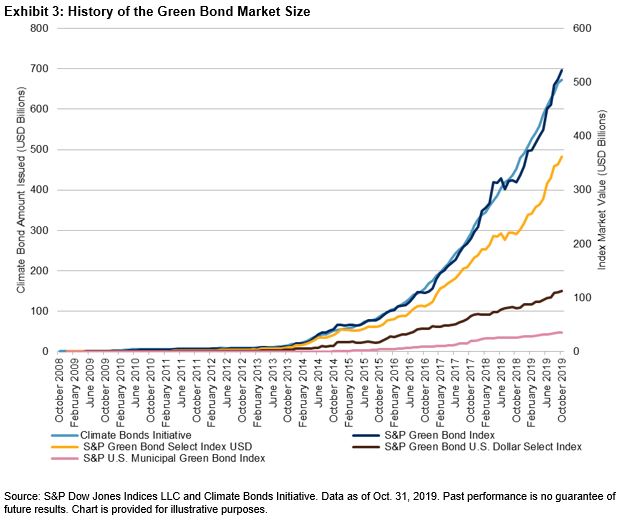Except for a couple of hiccups, the U.S. stock market has more or less hummed along in an upward trajectory for 2019. Through October, the S&P 500 is up 23%. What is surprising is that the S&P 500 Low Volatility Index® outperformed the benchmark by almost 3%, gaining 26% over the same period. This is uncharacteristic because the low volatility index is designed to attenuate the performance of the S&P 500. But looking at the path that the S&P 500 took to arrive at current levels helps us understand why Low Vol has done so well even in a year when its parent index gained strongly. The chart below compares the performance of the two indices. Performance for Low Vol is a smoother line. This is expected but we also see that by losing less when the S&P 500 experienced two major dips in May (S&P 500: -6.35%, S&P 500 Low Volatility Index: -0.93%) and August (S&P 500: -1.58%, S&P 500 Low Volatility Index: +2.43%), it took less effort for Low Vol to regain its footing when the market began to recover.

In its current rebalance, effective after market close November 15, 2019, more than half of the eight names that left the index came from the Financials sector, scaling back the weight in the sector by 5%. The slack was picked up by Communication Services and Real Estate.
The Latest Rebalance for the S&P 500 Low Volatility Index Scaled Back Financials Significantly
Looking at the trailing one-year volatility for S&P 500 sectors compared to three months ago, there is nothing to indicate that Financials as a group became a lot more volatile. The S&P 500 Low Volatility Index targets low volatility at the stock level and for the latest rebalance at least, there seems to be more going on idiosyncratically than at the sector level.
Volatility for S&P 500 Sectors Is Consistent With Levels from Three Months Ago


















